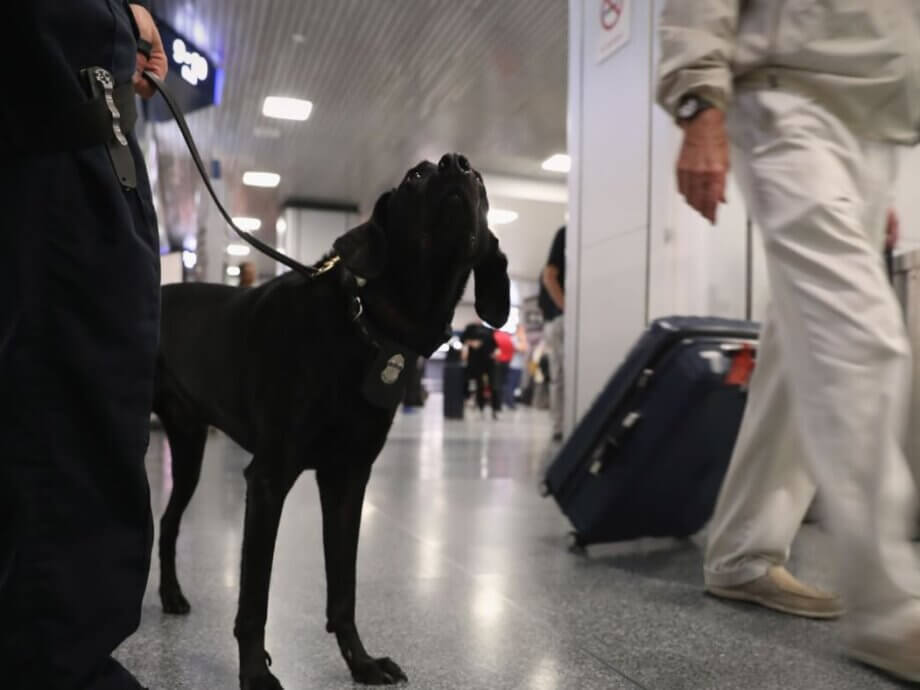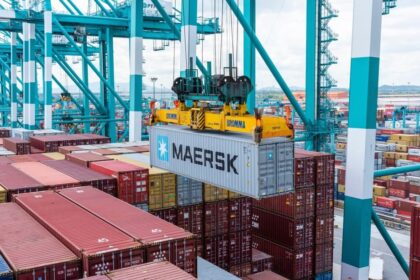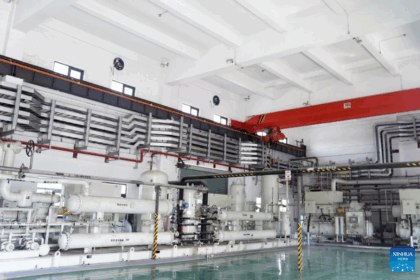Cambodia’s New Weapon Against Drug Trafficking: Drug-Sniffing Dogs
Cambodia has launched a significant new initiative in its ongoing battle against drug trafficking and abuse: the deployment of specially trained drug-sniffing dogs. This move marks a turning point in the country’s anti-drug strategy, combining advanced canine training with regional cooperation and a renewed commitment to public safety. The program, spearheaded by the Cambodian Mine Action Center (CMAC) in partnership with the National Police, aims to enhance the effectiveness of law enforcement in detecting and intercepting illegal drugs across the Kingdom.
- Cambodia’s New Weapon Against Drug Trafficking: Drug-Sniffing Dogs
- Why Drug-Sniffing Dogs? The Science and Strategy
- Building Cambodia’s Canine Capacity: Training and Collaboration
- Operational Deployment: Where and How Are the Dogs Used?
- Regional and International Cooperation: Vietnam’s Support and Beyond
- The Broader Context: Cambodia’s War on Drugs
- How Are the Dogs Trained? The Process and Challenges
- Expanding the Program: Future Plans and Ambitions
- Expert Perspectives: The Value and Limitations of Canine Detection
- Regional and Global Implications: Cambodia’s Role in the Greater Mekong Subregion
- Challenges and Sustainability: Ensuring Long-Term Success
- In Summary
Why Drug-Sniffing Dogs? The Science and Strategy
Drug-sniffing dogs, also known as detection dogs, are trained to use their extraordinary sense of smell to identify the presence of narcotics, even when hidden in the most ingenious ways. A dog’s olfactory system is estimated to be tens of thousands of times more sensitive than that of humans, allowing them to detect minute traces of substances that would otherwise go unnoticed by conventional screening methods such as X-rays or manual searches.
In Cambodia, the use of detection dogs is not entirely new. CMAC has a long history of training dogs for mine detection, peacekeeping, and security purposes. However, the expansion of this expertise into drug detection represents a strategic adaptation to the evolving challenges posed by drug trafficking networks, which are increasingly sophisticated and transnational in nature.
Building Cambodia’s Canine Capacity: Training and Collaboration
The current deployment of drug-sniffing dogs is the result of a multi-year effort to build local capacity in canine training and handling. Previously, Cambodia relied on imported dogs trained abroad—a process that was both costly and logistically challenging. Today, CMAC has developed the expertise to breed, train, and deploy dogs for a variety of detection tasks, including drug and mine detection, within Cambodia itself.
In early 2025, a milestone was reached when CMAC handed over 10 drug-sniffing dogs to the National Police following the completion of a rigorous training program for 20 police officers and five CMAC staff at the Kampong Chhnang Mine Action Technical Institute. The training, which lasted 96 days, covered not only the technical aspects of drug detection but also the care, nutrition, and ongoing conditioning required to maintain the dogs’ high performance.
CMAC Director-General Heng Ratana emphasized the significance of this achievement, stating that Cambodia now possesses the talent, experience, and full ownership of the breeding and training of dogs for national needs. He noted that CMAC is even capable of supplying specialized detection dogs to the international community, reflecting the growing reputation of Cambodia’s canine training programs.
Operational Deployment: Where and How Are the Dogs Used?
The newly trained drug-sniffing dogs are being deployed in cooperation with the Special Intervention Unit of the National Police, with initial operations centered in Phnom Penh’s Chbar Ampov district. Their primary mission is to support drug crime prevention and suppression efforts, particularly in high-risk areas such as border checkpoints, airports, tourist zones, special economic zones, and development areas.
Major General Chhin Bunran, Director of the Kampong Chhnang Provincial Mine Action Technical Institute, highlighted that the dogs’ ability to detect drugs hidden in hard-to-find places gives law enforcement a critical edge. This is especially important as traffickers increasingly use sophisticated concealment methods to evade detection.
National Police Chief General Sar Thet underscored the importance of canine units in improving national security and public order, both domestically and for international stakeholders. The collaboration between CMAC and the National Police is formalized through a Memorandum of Understanding (MoU) signed in January 2025, which also covers cooperation in demining and explosive ordnance disposal.
Regional and International Cooperation: Vietnam’s Support and Beyond
Cambodia’s efforts to strengthen its canine detection capabilities have been bolstered by regional cooperation, most notably with Vietnam. In a recent meeting between Cambodia’s Minister of Interior Sar Sokha and Vietnam’s Minister of Public Security Luong Tam Quang, Vietnam donated 30 detection dogs—15 for mine detection and 15 for drug detection—to Cambodia. This gesture reflects the close diplomatic and security ties between the two countries and their shared commitment to combating cross-border crime.
The donation was part of a broader agreement to enhance law enforcement cooperation, border security, and police training. It also highlights the importance of international partnerships in addressing the transnational nature of drug trafficking, which often involves smuggling routes that cross multiple borders in the Greater Mekong Subregion.
The Broader Context: Cambodia’s War on Drugs
The deployment of drug-sniffing dogs comes at a time when Cambodia is facing increasingly complex and dangerous drug challenges. According to official statistics, in the first five months of 2025 alone, over two tonnes of narcotics and chemical precursors were seized in 4,134 drug-related cases, resulting in the arrest of 10,765 suspects, including 862 women. These figures underscore the scale of the problem and the urgent need for innovative solutions.
Lieutenant General Khoeng Sarath, director of the Anti-Drug Department, has called for strengthened cooperation and increased effectiveness in the prevention, control, and suppression of drug-related crimes. He has also emphasized the importance of proper care and regular training for the canine units to ensure their continued effectiveness in the field.
How Are the Dogs Trained? The Process and Challenges
Training a drug-sniffing dog is a complex and time-intensive process, typically taking between 9 to 12 months. The process begins with the selection of suitable puppies, often from breeds known for their intelligence, agility, and strong sense of smell, such as German Shepherds, Belgian Malinois, and Labradors. The dogs undergo basic obedience training before being introduced to the scents of various narcotics.
Handlers use positive reinforcement techniques, rewarding the dogs with treats or play when they successfully identify the target scent. Over time, the dogs learn to associate the smell of drugs with a positive outcome, making them eager and reliable partners in detection work. The training also includes exposure to different environments and scenarios to ensure the dogs can perform effectively in real-world operations.
One of the unique advantages of CMAC’s program is that the dogs are bred and trained in Cambodia, making them well-adapted to the local climate and conditions. This contrasts with imported dogs, which may struggle to acclimatize and perform optimally in Cambodia’s hot and humid environment.
Expanding the Program: Future Plans and Ambitions
The current batch of drug-sniffing dogs represents just the beginning of a broader effort to scale up Cambodia’s canine detection capabilities. CMAC currently manages around 144 dogs and plans to breed an additional 100 in 2025 to support national forces and potentially supply international organizations and other countries. There are also ambitions to develop the National Dog Centre into a regional hub for the training and export of detection dogs skilled in explosives, security, wildlife tracking, and drug-sniffing.
Deputy Prime Minister and Minister of Interior Sar Sokha has announced plans to eventually deploy up to 400 drug-sniffing dogs across provincial and municipal police units, with a particular focus on tightening anti-drug crackdowns in border provinces. This expansion is seen as critical to addressing the flow of drugs and chemicals into Cambodia, much of which is smuggled across land borders and destined for both domestic consumption and onward trafficking to other countries.
Expert Perspectives: The Value and Limitations of Canine Detection
Experts in law enforcement and drug policy widely acknowledge the value of drug-sniffing dogs as a force multiplier in anti-drug operations. Dogs can detect drugs that are invisible to the human eye and undetectable by standard screening equipment, making them indispensable in situations where traffickers use creative concealment methods.
General Meas Vyrith, Secretary-General of the National Authority for Combating Drugs (NACD), has noted that dogs can recognize scents that humans cannot, providing a crucial advantage in the fight against drug trafficking. However, he also cautions that canine detection is not a panacea and must be integrated into a broader strategy that includes intelligence gathering, community engagement, and international cooperation.
Hang Pitou, administration office chief of the DTA Rehabilitation Drug Addiction Treatment Centre in Phnom Penh, points out that the strategic deployment of dogs at key locations such as airports and border checkpoints can significantly increase the chances of intercepting drug shipments and apprehending offenders.
Regional and Global Implications: Cambodia’s Role in the Greater Mekong Subregion
Cambodia’s investment in canine detection units is part of a wider regional effort to combat drug trafficking in the Greater Mekong Subregion, which includes Vietnam, Laos, Myanmar, China, and Thailand. The region is a major transit and production hub for synthetic drugs, particularly methamphetamine, which poses significant challenges for law enforcement agencies.
At the 11th Sub-Regional Action Plan Review Workshop on Drugs, held in Phnom Penh, Cambodian officials urged neighboring countries to strengthen anti-drug trafficking controls and to quickly ban new drugs with abuse potential. The United Nations Office on Drugs and Crime (UNODC) has been a key partner in providing technical assistance, equipment, and training to support these efforts.
By developing its own capacity to train and deploy detection dogs, Cambodia is positioning itself as a leader in regional security cooperation and a potential exporter of canine expertise to other countries facing similar challenges.
Challenges and Sustainability: Ensuring Long-Term Success
While the deployment of drug-sniffing dogs is a promising development, it is not without challenges. Maintaining the health, motivation, and skills of the dogs requires ongoing investment in training, veterinary care, and handler support. There is also a need to ensure that the dogs are used ethically and effectively, with clear protocols for deployment and accountability.
Financial support for the program has been provided by both the government and international partners. During a recent visit, Lieutenant General Khoeng Sarath provided financial incentives to dog care officers and special intervention officers involved in dog handling, recognizing the critical role they play in the success of the program.
Looking ahead, the sustainability of Cambodia’s canine detection program will depend on continued investment in human and technical resources, as well as the ability to adapt to emerging threats and technologies in the ever-evolving landscape of drug trafficking.
In Summary
- Cambodia has launched a new initiative deploying drug-sniffing dogs to combat drug trafficking and abuse.
- The program is a collaboration between the Cambodian Mine Action Center (CMAC) and the National Police, with support from Vietnam and other international partners.
- Drug-sniffing dogs are trained locally, making them well-suited to Cambodia’s environment and operational needs.
- The dogs are deployed in high-risk areas such as border checkpoints, airports, and special economic zones to enhance drug detection and enforcement.
- Plans are underway to expand the program, with ambitions to breed and train more dogs for both domestic use and international export.
- Experts emphasize the value of canine detection as part of a broader anti-drug strategy, while noting the need for ongoing investment and regional cooperation.
- Cambodia’s efforts reflect a growing commitment to public safety and regional security in the face of evolving drug trafficking challenges.












